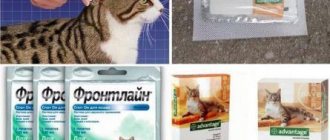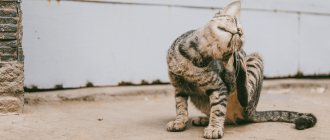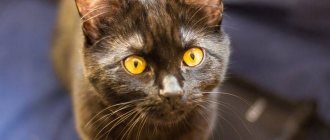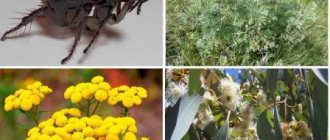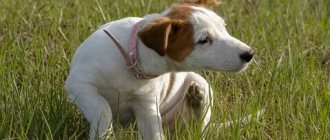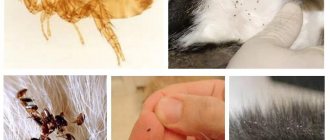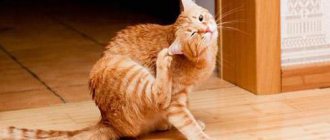Skip to content
VolosyInform Site about hair on the head and body
- coolka4k
- 29.12.2020
- Hair problems
How to get rid of fleas on humans? For a long time, much of the world firmly believed that fleas were specific to animals and that pets could infect them while humans could not - and it turns out that this was a big mistake. Fleas can live in human hair, and if you find that scary, you're not alone. How to get rid of fleas on a person’s head in their hair is the topic of the next article on.
How to get rid of fleas on a person's head
In fact, fleas can and will infest people even when there are no dogs, cats, guinea pigs, rabbits or other furry pets in the home. The good news is that this doesn't have to happen if you make sure your pets are flea-free. Living in or near the forest is dangerous, but you can take precautions.
Can fleas live in human hair? Yeah. They are also difficult to get rid of because human hair is longer and thicker than animal hair. You may not even react to fleas, so you won't necessarily know. We have compiled a selection of remedies in case you discover that fleas have appeared in your hair.
#1: Try lice shampoo
Any shampoo against hair mites or lice will get rid of fleas living in human hair. Follow the instructions on the bottle and use a fine-tooth comb—you'll need one.
#2: Make a Baking Soda Paste for Fleas
Make a paste of water and baking soda. It should be thin enough to spray from the bottle. Saturate your hair, leave the mixture for ten minutes, then rinse with warm water.
Make a paste of water and baking soda for an effective flea treatment.
#3: Tea tree oil will help get rid of fleas on humans
Tea tree oil or shampoo with tea tree oil eliminates fleas. It is both antimicrobial and antiparasitic, so it kills eggs and fleas.
Wash your hair with lemon dish soap
Lemon dish soap will rid your pet of fleas, making it a safe and effective option for combating the fact that fleas can live in human hair. Also, yes, use it on your pets too.
#5: Rinsing hair with apple cider vinegar is a home remedy for fleas in humans.
Finally, a simple apple cider vinegar rinse should kill fleas too. Because it is acidic, it gets rid of fleas and their eggs.
Rinsing your hair with apple cider vinegar will remove hair and add shine.
Moreover, it leaves your hair and scalp acidic, so after a vinegar rinse, your scalp is no longer a welcome environment for itchy guys. Take some warm water, add apple cider vinegar and apply it to your hair and scalp, then cover it with a shower cap and leave it on for 15 minutes before rinsing your hair.
We recommend reading: Hair scales are open and closed.
The life cycle of a flea is divided into four stages
The life cycle of a flea is divided into four stages:
1. To mate and lay eggs, an adult female flea needs blood, and she attacks the most suitable host - your animal. After a 23-day feeding period, the adult female flea begins to lay eggs. Fleas are extremely prolific, with an adult female laying up to 50 eggs a day! To the naked eye, flea eggs look like grains of salt. A fertilized female throws out eggs with force, usually in portions of several pieces so that they do not remain on the animal’s fur, but fall to the ground or a place that it constantly visits.
2. The eggs hatch into legless larvae. Using a special “egg tooth”, they seem to cut the shell of the egg in order to get out. The larvae feed on waste products (semi-digested blood) of adult fleas and various decaying organic debris for 4-8 days.
3. The larva spins a thick cocoon, which provides ideal protection from environmental factors and insecticides.
4. The pupa, while in the cocoon, will develop into an adult insect, which will not come out until it senses the proximity of the “master”. Thus, the duration of the pupal stage is several days or months, depending on environmental conditions. The adult is born in response to carbon dioxide, heat and vibrations created by animals and people. Having emerged from the cocoon, she is ready to begin the life cycle again and go through it in three weeks.
How to get rid of fleas on a person's head video
Google the question: “Can fleas live in human hair?” and you will find many other remedies as well as precautions. Tell the truth: did you have fleas?
Post Views: 1,082
coolka4k
- Hair problems
Could your cat have lice, where do they come from? Symptoms of infection
The problem of lice infestation is especially acute for cats that occasionally go outside for a walk. By communicating with its relatives, a pet can easily “catch” an unpleasant disease.
The following symptoms indicate whether your cat has lice:
- Dry, loose fur;
- Baldness of some areas of the skin;
- Itching;
- Anemia.
You can find out if a cat is infested with lice by carefully examining your pet's skin and fur. Nits and adults of these parasites are visible to the naked eye.
- Shampoos for external parasites. Special pet shampoos against ectoparasites have a detrimental effect on lice. After soaping the animal, the shampoo should be left on the pet for at least 10 minutes and only then rinsed thoroughly. Then it is recommended to comb the cat and dry it. If your pet tolerates the bathing procedure calmly, then washing with zoo shampoo will not give him any unpleasant sensations.
- Collars against fleas, lice, ticks. Collars destroy lice on the animal and protect the pet from re-infestation. However, often with constant wearing of such a collar, animals experience an allergic reaction.
Recent comments
- Maria on I dreamed of long thick hair
- Ruslana on Dry dandruff
- Masya on Caring for damaged hair
- Vera on Kallos Keratin reviews
- Yana on Hair of the Jews
How to recognize household fleas?
You may not be aware of the presence of fleas in your home until numerous, rather painful bites appear on your body. The small insect belongs to the order of bloodsuckers and needs to feed on blood to survive. The search for the culprit of the bites will lead to the discovery of a parasite with the following characteristics:
- Size – small, 1-5 mm.
- Structure. The body of the flea is compressed at the sides, there are bristles for clinging to the surface.
- Color – shades from yellowish to dark brown.
- Jumping ability. Distinctive feature of the insect. The flea jumps far (up to 1 m) and high (up to 0.5 m) in order to easily climb onto the victim.
Fleas in the house do not live on warm-blooded inhabitants, they only attack them for saturation. After a meal, the pests hide in their hiding places until the next meal. They prefer to live in secluded places:
- Skirting boards
- Carpet pile
- Furniture cracks
- Animal beds and houses
- Bed sheets
- Wallpaper
- Cracks
Due to their microscopic size, domestic fleas can live anywhere in an apartment, and even the most harmless hamster can become a victim of bloodthirsty insects.
Tags
alopecia hair loss curly hair combs blonde hair gray hair dark hair straighteners and hair dryers
Danger from household fleas
If fleas appear in an apartment, then none of the residents can avoid being bitten. Minor skin lesions are not at all harmless. The fact that they itch and cause irritation is only a small part of the trouble that these bloodsucking creatures pose. Scratching bitten areas leads to the formation of wounds, inflammation, and infection. Inflamed small wounds are the first sign of pulicosis, a disease caused exclusively by domestic flea parasites. Pulicosis is especially dangerous for children, as they are most susceptible to allergic manifestations.
But the main threat from bloodsucking animals is the spread of infectious diseases (the risk is not too great, but it is quite real). It is not for nothing that epidemiologists strictly control the populations of animals whose fur is parasitized by fleas - carriers of the “Black Death” (plague). In total, a small insect can be a carrier of > 200 pathogens of dangerous infections:
- Hepatitis B and C
- Brucellosis
- Plague
- Salmonellosis
- Encephalitis
Fleas in an apartment are a real disaster. They multiply at a catastrophic speed, in a short time turning the life of the inhabitants of the home into a living hell. Fighting them is difficult and not always successful. You can waste a lot of time, money and nerves and fail. Or you can immediately take the reasonable path and seek help from those who will defeat the pest quickly and unconditionally - professional exterminators.
Signs of human flea infestation
The main sign indicating the presence of fleas is bite marks. The area of their localization is the feet, legs and ankles, less often - the wrists and neck. At the site of the bite, a small red spot or papule appears with a darker dot in the center, which itches for several days.
The consequence of a flea bite can be a skin lesion called pulicosis. With this disease, a person may experience:
- severe redness and itching at the bite sites;
- temperature increase
- enlarged lymph nodes;
- suppuration at the bite site;
- ulcers on the mucous membrane of the mouth and throat.
Bite marks are most often found in the morning, since insects are most active at night. It is recommended to treat the affected areas with antiseptic and anti-allergenic drugs.
Description
The human flea is a small wingless insect 1.6-3.2 mm long. The body of the human flea is flat, strongly compressed laterally, dark in color, usually from light brown to black-brown. Males are smaller than females. The head is small, with short antennae, in front of which there is one simple eye. The mouthparts are adapted for piercing the skin and sucking blood. The hind legs are jumping. The structure of the insect's body is adapted to movement in the fur of the host animal.
Meet the human flea
Scientists have described 2,086 species, 200 genera and 15 families of insects. The official species “human flea” exists and belongs to the common family.
Common types of fleas
- Felines;
- Canine;
- Rat;
- Rabbit;
- Human.
However, do not rush to conclusions that there are fleas on people. The name of the insect does not indicate its habitat. All of the above types of ectoparasites feed on the blood of any mammals. For example, cat fleas bite cats, dogs, humans, pigs, and cows.
Appearance of fleas
The flea size is usually from 1 to 5 mm in length, but in some species the female can reach 1 centimeter, especially after a heavy meal.
As a rule, large fleas, about one centimeter in size, choose deer and elk as their prey. The color of fleas is usually red, dark brown and sometimes black. Fleas do not have wings and cannot fly, but they can jump well. The absence of wings is even an advantage for fleas, because they would prevent them from moving in the fur of animals. The flea's body consists of an abdomen and a head; a durable chitinous layer covers the surface of the body. The body structure of fleas is similar to that of a shrimp, only much smaller in size. Thanks to this body shape, fleas easily penetrate the fur of animals, the feathers of birds and the clothing of people. The flea gets onto the animal's body through long jumps.
Also, the flea's body is covered with many bristles, and on the head there are ctenidia - these are jagged combs; behind the eyes there are antennae - antennas that help fleas catch females during the mating season. Such bristles and combs prevent parasites from being combed out of the hair. The flea's mouthparts are piercing-sucking and work as follows: the insect bites the victim's skin, releases a little saliva to stop blood clotting, after which the flea penetrates the wound, it needs to reach the blood vessels.
There is one more feature in the anatomy of fleas - this is the pygidium organ, it is located in the back of the abdomen. On its surface there are hundreds of tiny hairs that can capture air vibrations. The function of the pygidium is to warn the parasite about dangers.
Reasons for the appearance of fleas in the apartment
Insects that parasitize on the blood of animals and humans have a special structure of the body and limbs that allow them to make high and long jumps of several meters. In nature, fleas become active in the warm season, but in an urban environment, living in an apartment, they are active all year round. Flea bites are painful; insect saliva contains strong allergens. Fleas are carriers of worm eggs, pathogens of intestinal and blood infections, and therefore can cause harm to human health. Their presence in the house is extremely undesirable and unpleasant, but the appearance of blood-sucking parasites is not always caused by the presence of pets.
About flea bites
At the moment of the bite, the victim feels a stabbing pain and severe itching. The bite site itself swells a little, and slight swelling appears. The reaction to flea bites can be different, it all depends on the individual and his health. For some, the symptoms go away easily and quickly, while for others, the wound is very itchy for a long time after the bite; this may mean the onset of pulicosis
. In this case, you should immediately consult a doctor.
When the flea eats and falls off, a small hematoma forms at the site of the wound, the blood is baked and the wound heals. The only way to protect yourself from parasite bites is to completely destroy them in your home and follow preventive measures when traveling outdoors.

